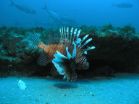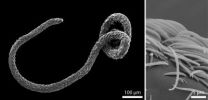(Press-News.org) San Francisco, September 14, 2014—A secondary analysis of the National Surgical Adjuvant Breast and Bowel Project B-32 trial (Krag 2010) indicates that radiation therapy (RT) does not increase the incidence of lymphedema in patients with node-negative breast cancer, according to research presented today at the American Society for Radiation Oncology's (ASTRO's) 56th Annual Meeting.
The original NSABP B-32 study was a randomized trial of sentinel node biopsy (SNB) versus SNB + axillary lymph node dissection (ALND) in 5,611 women with clinically node-negative breast cancer. The study was initiated to determine if SNB was as effective as ALND with fewer side effects.
Although designed to assess the impact of type of axillary surgery specifically on lymphedema risk, the NSABP B-32 trial also provided the opportunity to evaluate the impact of radiation therapy (RT) on lymphedema risk. Lymphedema, swelling of the arm commonly caused by the removal of or damage to lymph nodes, is a significant concern for women undergoing breast cancer treatment.
Measures of lymphedema were collected at baseline prior to RT and every 6 months during the 3-year follow-up period. Lymphedema was assessed both by standardized arm measurements by clinicians (objective lymphedema) and via questionnaires completed by patients (subjective lymphedema).
Objective lymphedema (clinician measured) was defined as relative arm volume difference (RAVD) >10 percent, and was determined by a water displacement method. Subjective lymphedema was defined as patient-reported ipsilateral (occurring in the same arm) swelling that was "somewhat," "quite" or "very" bothersome. Repeated measures analyses, chi-square and Fisher's exact tests were used to evaluate the association between measures of lymphedema and RT. Kappa coefficient was used to assess agreement between objective and subjective lymphedema measures at individual time points.
Among 3,916 women in the trial with lymphedema assessments, including 1,936 randomly assigned to SNB+ALND and 1,980 randomly assigned to SNB, 82.2 percent (3,220) received RT and 17.2 percent (674) did not undergo RT. The status was unknown for 0.6 percent (22) of the patients. The original study results showed that SNB+ALND were associated with significantly greater risk of lymphedema vs. SNB alone.
Upon secondary analysis, researchers found no greater risk of lymphedema among women receiving RT vs. among women who did not receive RT. There was no significant difference in standardized arm measurements and no significant difference in patient reports of bothersome arm swelling during three years of follow up, suggesting that radiation does not contribute to lymphedema risk beyond surgery over time. Interestingly, although receipt of radiation did not impact either, there was a lack of agreement between patient reports of bothersome swelling (subjective lymphedema) and clinician measurements of arm swelling (objective lymphedema) throughout the three years of follow-up.
At 36 months follow-up of the SNB+ALND group that had received RT, 12.4 percent (147/1,183) had RAVD >10 percent (objective lymphedema), and 7.4 percent (16/216) reported bothersome swelling (subjective lymphedema). Within the SNB+ALND group that did not receive RT, 16.7 percent (36/216) had RAVD >10 percent, and 8.8 percent (5/57) of the group reported bothersome swelling.
Within the SNB-only group, 7.4 percent (90/1,218) of RT recipients had RAVD >10 percent (objective lymphedema) at 36 months of follow-up, with only 3.2 percent (8/250) of RT patients reporting bothersome arm swelling. For the SNB-only patients who did not undergo RT, 4.5 percent (10/220) had RAVD >10 percent, whereas 4.8 percent (3/63) reported bothersome swelling.
"These results provide much needed reassurance to breast cancer patients regarding the impact of radiation therapy on lymphedema risk," said lead study author Susan McCloskey, MD, MSHS, assistant professor of radiation oncology at The David Geffen School of Medicine at University of California, Los Angeles. "The study findings argue convincingly that radiation therapy to the Level 1 axilla, considered unavoidable "collateral damage" when radiating the whole breast, does not contribute to lymphedema risk beyond surgery. Several recent analyses have suggested that mastectomy rates are on the rise in the United States, and some have suggested that a desire to avoid radiation and its associated toxicities is a contributing factor. This analysis suggests that lymphedema concerns should not be an impediment to women choosing breast conservation and radiation therapy."
The abstract, "The Impact of Radiation Therapy on Lymphedema Risk and the Agreement Between Subjective and Objective Lymphedema Measures: NSABP B-32 Secondary Data Analysis," will be presented in detail during a scientific session at ASTRO's 56th Annual Meeting at 3:15 p.m. Pacific time on Sunday, September 14, 2014. To speak with Dr. McCloskey, please call Michelle Kirkwood on September 14 – 17, 2014, in the ASTRO Press Office at San Francisco's Moscone Center at 415-978-3503 or 415-978-3504, or email michellek@astro.org.
ASTRO's 56th Annual Meeting, to be held at the Moscone Center in San Francisco, September 14-17, 2014, is the nation's premier scientific meeting in radiation oncology. The 2014 Annual Meeting is expected to attract more than 11,000 attendees including oncologists from all disciplines, medical physicists, dosimetrists, radiation therapists, radiation oncology nurses and nurse practitioners, biologists, physician assistants, practice administrators, industry representatives and other health care professionals from around the world. Led by ASTRO President Bruce G. Haffty, MD, FASTRO, a radiation oncologist specializing in breast cancer, the theme of the 2014 Meeting is "Targeting Cancer: Technology and Biology," and the Presidential Symposium, "Local-regional Management of Breast Cancer: A Changing Paradigm," will feature Jay R. Harris, MD, FASTRO, and Thomas A. Buchholz, MD, FASTRO, to highlight recent practice-changing, landmark studies and current developments in the local-regional management of breast cancer. ASTRO's four-day scientific meeting includes presentation of up to four plenary papers, 360 oral presentations, 1,862 posters and 144 digital posters in more than 50 educational sessions and scientific panels for 20 disease-site tracks. Three keynote speakers will address a range of topics including oncologic imaging, biology and targeting in oncology, and human error and safety concerns: Hedvig Hricak, MD, PhD, Chair of the Department of Radiology and the Carroll and Milton Petrie Chair at Memorial Sloan Kettering Cancer Center; Frank McCormick, PhD, FRS, DSc (hon), Professor Emeritus and the David A. Wood Distinguished Professor of Tumor Biology and Cancer Research of the University of California at San Francisco Helen Diller Family Comprehensive Cancer Center; and Sidney Dekker, PhD, MA, MSc, Professor and Director of the Safety Science Innovation Lab at Griffith University, Brisbane, Australia.
INFORMATION:
ABOUT ASTRO
ASTRO is the premier radiation oncology society in the world, with more than 10,000 members who are physicians, nurses, biologists, physicists, radiation therapists, dosimetrists and other health care professionals that specialize in treating patients with radiation therapies. As the leading organization in radiation oncology, the Society is dedicated to improving patient care through professional education and training, support for clinical practice and health policy standards, advancement of science and research, and advocacy. ASTRO publishes two medical journals, International Journal of Radiation Oncology, Biology, Physics and Practical Radiation Oncology; developed and maintains an extensive patient website, http://www.rtanswers.org; and created the Radiation Oncology Institute, a non-profit foundation to support research and education efforts around the world that enhance and confirm the critical role of radiation therapy in improving cancer treatment. To learn more about ASTRO, visit http://www.astro.org.
2014 American Society for Radiation Oncology (ASTRO) 56th Annual Meeting
News Briefing, Monday, September 15, 2014, 11:00 a.m. Pacific time
Scientific Session: Sunday, September 14, 2014, 3:15 – 4:45 p.m. PT, the Moscone Center
1463 The Impact of Radiation Therapy on Lymphedema Risk and the Agreement Between Subjective and Objective Lymphedema Measures: NSABP B-32 Secondary Data Analysis
Author Block: S. A. McCloskey1, H. Bandos2, T. Julian3, J. Kopec2, N. Wolmark2, S. Anderson2, D. Krag2, E. Mamounas4, P. Ganz1, 1University of California Los Angeles, Los Angeles, CA, 2National Surgical Adjuvant Breast and Bowel Project (NSABP), Pittsburgh, PA, 3NSABP, Pittsburgh, PA, 4MD Anderson Cancer Center Orlando, Orlando, FL
Purpose/Objective(s): Lymphedema is a known consequence of locoregional breast cancer therapies; however, it is difficult to separate the independent effects of surgery and radiation therapy (RT). We performed a secondary data analysis of NSABP B-32 clinical trial data to assess the impact of RT on lymphedema risk among women undergoing sentinel node biopsy (SNB) versus axillary lymph node dissection (ALND).
Materials/Methods: NSABP B-32 was a randomized trial of SNB+ALND versus SNB in women with clinically node negative breast cancer. Measures of lymphedema were collected at baseline and every 6 months over the 3-year follow-up period. We defined objective lymphedema as relative arm volume difference (RAVD)>10% as determined by a water displacement method, and subjective lymphedema as patient endorsed ipsilateral arm swelling that was "somewhat", "quite" or "very" bothersome. Repeated measures analyses, chi-square, and Fisher's exact tests were used to evaluate the association between measures of lymphedema and RT receipt. Kappa coefficient was used to assess agreement between objective and subjective lymphedema measures at individual time points.
Results: NSABP B-32 randomized 5611 clinically node negative women to SNB+ALND versus SNB alone. Among 3972 pathologically node negative eligible women with follow-up, baseline objective and subjective lymphedema assessments were performed in 3916 and 735 respectively. 82% of those with lymphedema assessments received RT with 2.2% receiving regional nodal RT. As has been previously reported, both subjective and objective lymphedema rates were higher with SNB+ALND than with SNB. However, there was no significant impact of RT on long-term (6-36 months) lymphedema (p>0.8). There were no significant differences at the individual time points (TABLE). As evidenced by kappa coefficient ranging between 0.02 and 0.21, little agreement was noted between subjective and objective lymphedema measures.
Conclusions: In this large cohort of patients with prospectively collected data, RAVD>10% was detected in 13% of women undergoing ALND and in 7% of women undergoing SNB at 36 months. There is no evidence to suggest a detrimental impact of RT on risk of lymphedema beyond surgery. Subjective lymphedema, defined as bothersome to patients, was endorsed less frequently (8% ALND and 3.5% SNB at 36 months) and had a poor agreement with objectively measured RAVD>10%. Additional analyses of objective data are in progress to evaluate quantification methods that may better correlate with subjective assessments.
Author Disclosure Block: S.A. McCloskey: E. Research Grant; ASTRO Junior faculty career research training award. S. Leadership; ASTRO Endometrial Best Practices Co-Chair. H. Bandos: None. T. Julian: None. J. Kopec: None. N. Wolmark: None. S. Anderson: None. D. Krag: None. E. Mamounas: None. P. Ganz: None.
Patient-reported data shows RT does not increase risk of lymphedema in node-negative BC patients
2014-09-15
ELSE PRESS RELEASES FROM THIS DATE:
Improved survival shown in early-stage Hodgkin's Disease patients who receive radiation therapy
2014-09-15
San Francisco, September 14, 2014—Patients with stage I and II Hodgkin's Disease who receive consolidated radiation therapy (RT) have a higher 10-year survival rate of 84 percent, compared to 76 percent for patients who did not receive RT; and, the data also shows a decrease in utilization of RT, according to research presented today at the American Society for Radiation Oncology's (ASTRO's) 56th Annual Meeting.
Researchers evaluated clinical features and survival outcomes among 41,502 patients diagnosed with stage I and II Hodgkin's Disease from 1998 to 2011 from a prospectively ...
Advanced esophageal cancer patients who receive RT alone experience less problems when swallowing
2014-09-15
San Francisco, September 14, 2014—Radiation therapy (RT) alone is as effective in decreasing swallowing complications experienced by advanced esophageal cancer patients as RT combined with chemotherapy, thus allowing patients to forgo chemotherapy, according to research presented today at the American Society for Radiation Oncology's (ASTRO's) 56th Annual Meeting.
In this international study that included sites in Australia, New Zealand, Canada and the United Kingdom, researchers assessed the use of palliative chemotherapy combined with RT, or chemoradiotherapy (CRT), ...
Study finds warming Atlantic temperatures could increase range of invasive species
2014-09-15
"The results will allow us to better understand how the fish communities might shift under different climate change scenarios and provide the type of environmental data to inform future decisions relating to the management and siting of protected areas," said Paula Whitfield, a research ecologist at NOAA's National Centers for Coastal Ocean Science (NCCOS) and lead author of the study.
The North Carolina reefs lie within the temperate-tropical transition zone, where historically, both temperate and tropical species live, at their respective range limits. However, water ...
'Jaws' lived in Doncaster
2014-09-15
Sharks, swamps and a tropical rainforest teeming with life – it's not what comes to mind when you think of Yorkshire, England. But for the first time evidence of Doncaster's 310-million-year-old past, including a fossilised shark egg case, has been discovered in a derelict mining tip.
Some of the fossilised plants and creatures may even be new to science, and as well as the egg case, several horseshoe crabs and some previously unrecorded seed pods are amongst the finds. All had been preserved in rocks that formed within the coal and shale deposits in what is one of only ...
Dairy consumption linked to lower blood pressure and cardiovascular disease risk
2014-09-15
Rosemont, Ill., September 15, 2014: Globally, cardiovascular disease (CVD) claims 17 million lives each year, while complications from high blood pressure take an additional 9.4 million.1 New research presented by international scientists at the 12th Euro Fed Lipid Congress in Montpellier, France on September 15, 2014, suggests that milk consumption and dairy may play a beneficial role.
At the Milk and Dairy Products in Human Health session, the association between milk and risk for hypertension and CVD was examined by Dr. Sabita S. Soedamah-Muthu from Wageningen University ...
Think big! Bacteria breach cell division size limit
2014-09-15
This news release is available in German.
The life of a cell is straightforward: it doubles, divides in the middle and originates two identical daughter cells. Therefore, it has been long assumed that cells of the same kind are similarly sized and big cells cannot divide symmetrically. Silvia Bulgheresi's team, University of Vienna, revealed that two non-model bacteria divide regularly despite growing so long to be perceivable by the naked eye. These findings have been published in the renowned journal Nature Communications.
"The microorganisms thriving on the ...
Martian meteorite yields more evidence of possibility of life on Mars
2014-09-15
A tiny fragment of Martian meteorite 1.3 billion years old is helping to make the case for the possibility of life on Mars, say scientists.
The finding of a 'cell-like' structure, which investigators now know once held water, came about as a result of collaboration between scientists in the UK and Greece. Their findings are published in the latest edition of the journal Astrobiology.
While investigating the Martian meteorite, known as Nakhla, Dr Elias Chatzitheodoridis of the National Technical University of Athens found an unusual feature embedded deep within the ...
Mindfulness protects adults' health from the impacts of childhood adversity
2014-09-15
Adults who were abused or neglected as children are known to have poorer health, but adults who tend to focus on and accept their reactions to the present moment—or are mindful—report having better health, regardless of their childhood adversity. These findings, to be published in the October issue of Preventive Medicine, are based on the first study ever conducted to examine the relationship between childhood adversity, mindfulness, and health.
Led by Robert Whitaker, professor of public health and pediatrics at Temple University, the researchers surveyed 2,160 adults ...
The creation of the Vuoksi River preceded a significant cultural shift
2014-09-15
The creation of the Vuoksi River and the subsequent rapid decrease in the water level of Lake Saimaa approximately 6,000 years ago revealed thousands of square kilometres of new, fertile land in eastern Finland. A multidisciplinary research project organised by University of Helsinki researchers has studied the role that the decrease in water levels has played in the interaction between nature and humans. After dramatic shifts in the waterways, human life in the area underwent significant changes and gave rise to a new, innovative culture. This stemmed from an increase ...
Change laws to exempt unwell doctors from mandatory reporting, say medico-legal experts
2014-09-15
In a report published in today's Journal of Law and Medicine, the authors say an exemption to mandatory reporting in Western Australian legislation provides a model for amending equivalent laws in others jurisdictions, which could pave the way for nationally consistent legislation.
The call to amend and harmonise mandatory reporting laws also has the backing of the Royal Australian College of General Practitioners and a 2011 Senate Committee inquiry.
"Doctors who are unwell need to feel they can attend their treating doctor without the stumbling block of mandatory reporting," ...



